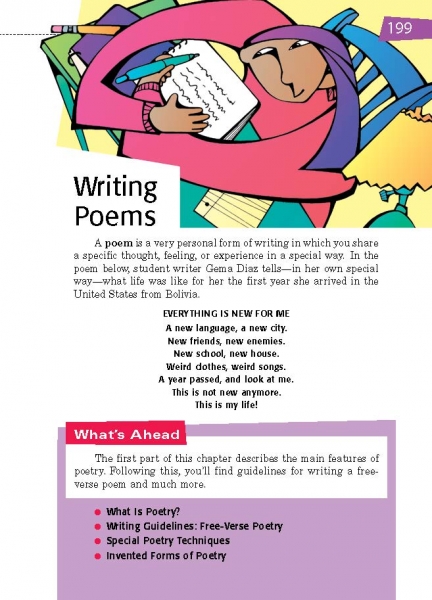Page 199 from

Start-Up Activity
To get started have students complete this following series of sentence starters:
- I am ______________________________. (Describe yourself in two words.)
- I wonder about _____________________ .
- I hear _____________________________ .
- I see ______________________________ .
- I want _____________________________.
- I am ______________________________ . (Repeat the first line)
Upon completion, inform students that they have just written a list poem about themselves. Ask for volunteers to share their work. To get things started, share a list poem about yourself. Then read and discuss page 199. During your discussion of the poem “Everything Is New for Me,” point out that the poet uses repetition to great effect. Ask students to point out examples.
Think About It
“Poems are imaginary gardens with real toads in them.”
—Marianne Moore
